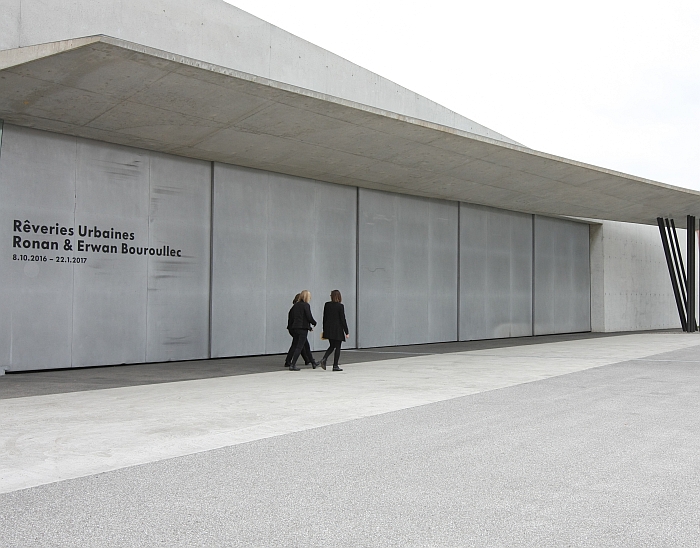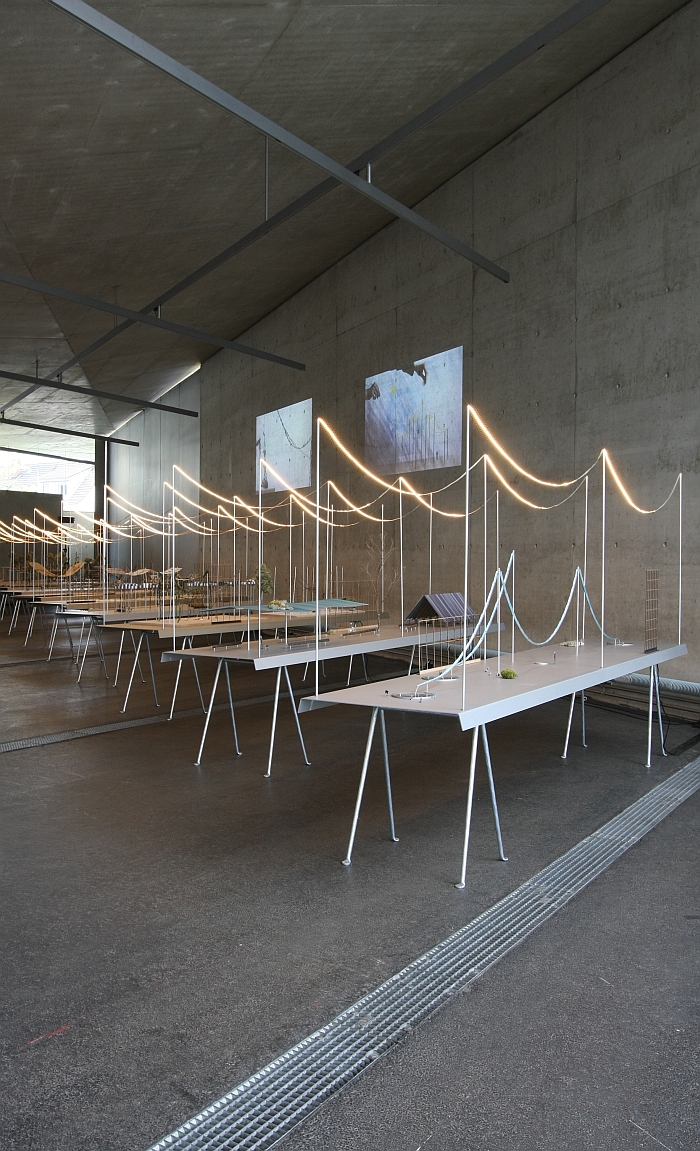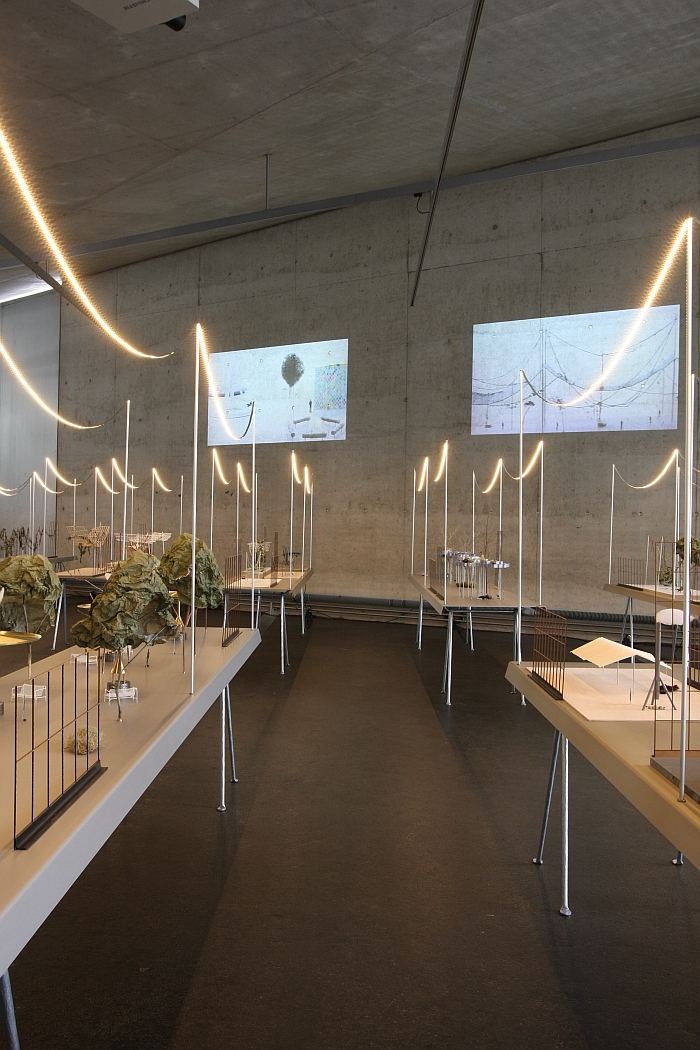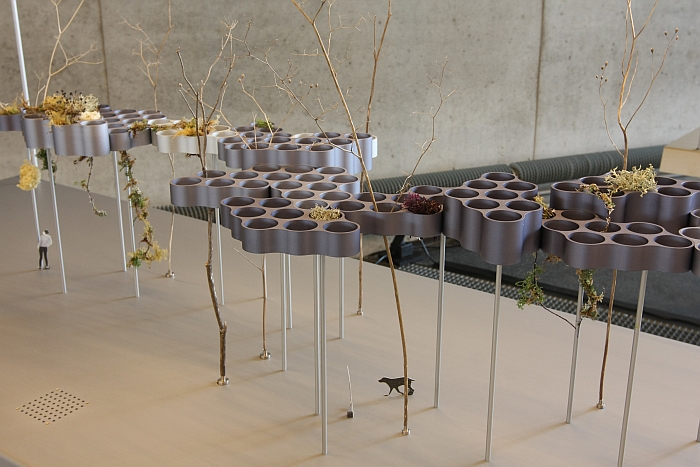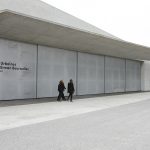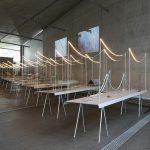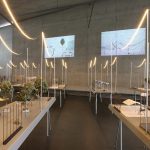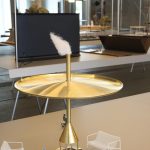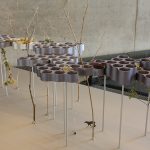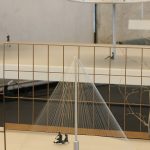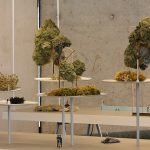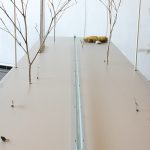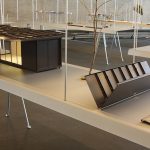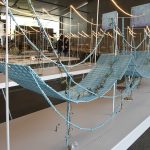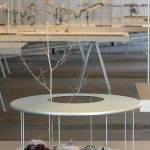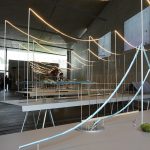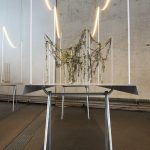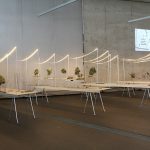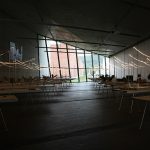Vitra Design Museum present Ronan & Erwan Bouroullec – Rêveries Urbaines
In 2016 the Breton capital Rennes hosted four exhibitions of, by and from Ronan and Erwan Bouroullec; one of them Rêveries Urbaines – Urban Dreams – is now on show at the Vitra Design Museum in Weil am Rhein
In the European design calendar late September/early October is Vienna Design Week and the opening of the winter/spring temporary exhibition in the Vitra Design Museum, Weil am Rhein.
And thus our annual outing on the charmingly romantic Wiener Walzer night train from Zürich to Vienna.
Not this year.
For on account of the opening of the new Vitra Design Museum Schaudepot, and the associated structural reorganisation, the Vitra Design Museum decided against a 2016/17 winter/spring exhibition and are instead letting the exhibition Alexander Girard. A Designers Universe run until February. In itself an excellent idea.
That in place of a new temporary exhibition the Vitra Design Museum used early October to open the exhibition Rêveries Urbaines by Ronan and Erwan Bouroullec has, however, less to do with carefully controlled planning and a lot more to do with a certain undemocratic spontaneity.
Or put another way, Vitra Design Museum founder, and former Vitra CEO, Rolf Fehlbaum saw Rêveries Urbaines in Rennes, was fascinated and came back enthusing, if not formally insisting, that the Vitra Design Museum also present it.
Which they now are.
And thus perfectly demonstrating the spontaneity the Vitra Design Museum’s curatorial director Mateo Kries told us in an interview shortly after taking up his position, that he wanted to bring to the institutes’s exhibition programme. The major exhibitions in the main museum have a preparation time of around three years, and thus offer only limited flexibility; with the establishment of the Vitra Design Museum Gallery the idea was to provide space for this failing flexibility. And since the opening of the Schaudepot and the related opening of the previously heavily fenced Vitra Campus, the options for such spontaneous exhibitions have increased. Including utilising Zaha Hadid’s Fire Station, a building previously on the wrong side of the Vitra Fence and thus only rarely used for exhibitions, yet one now freed and which the Vitra Design Museum are keen to use more often. If only for specially selected exhibitions which in the museum’s opinion fit to the specialities and atmosphere of the space.
Exhibitions in the Vitra Design Museum’s opinion such as Rêveries Urbaines.
Ronan & Erwan Bouroullec – Rêveries Urbaines
Reveries Urbaines was originally presented at the Champs Libres culture facility in Rennes as part of the city’s 2016 “Bouroullec Summer” programme.
Which meant it almost wasn’t shown.
“When Rennes first approached us we said no” explains Ronan Bouroullec, “before ultimately saying yes. Typical us! Always a no at first and then yes!” His smile broadening at the thought, or perhaps acceptance, of their inconsistency.
But why the original no?
“They wanted to do an exhibition because we are from Brittany, and for us an exhibition should be because they like our work, not just because we are from Brittany.”, answers Ronan, “but then over the course of two years we talked more and and we said OK but then a didactic presentation which shows our different ways of approaching things.”
Consequently, in addition to a general retrospective of the brother’s work and the largely abstract, experimental, craft based exhibition 17 Screens – an exhibition originally shown in Tel Aviv and which features pretty much that what the title implies – an early suggestion was that the Bouroullecs propose a plan for redeveloping a neglected area of central Rennes.
A suggestion which didn’t curry favour with the Bouroullecs.The thought of a site specific research project not resting easily with their understanding of nor approach to design, and instead they suggested an alternative, or as Ronan phrases it “a wider research about the city, not about Rennes, not France, not anywhere, but in which we think about the city in terms simple subjects, abstract subjects, bizarre subjects.”
Research which became Rêveries Urbaines
Ronan and Erwan Bouroullec’s Urban Dreams
Rêveries Urbaines – Rêveries Bouroullec
Although as an exhibition Rêveries Urbaines is essentially about landscape architecture the proposals presented have only little to do with architecture, or at least architecture in the way architects understand architecture. Architects generally think in terms of space, Rêveries Urbaines presents objects which stand in space, which communicate with the space and which affect both the users perception of and relationship to the space.
But are about the object, not the space.
And which thus reflect a central component of the Bouroullec’s existing canon, or at least the better, non wooden bird, bits: making impersonal spaces personable and bringing a certain sentiment de sécurité – a sense of comfort, familiarity and security – to those everyday situations where we may have forgotten to expect such.
And not just by the physical division inherent in works such as Alcove or Slow Chair. The Copenhague furniture collection for HAY, for example, is a delightful re-thinking of institutional furniture which reminds that such can be personal as well as functional, and attractive, while the Officina collection for Magis brings the user in contact with the production process, dissociates them from the anonymity of mass produced furniture and thus creates a family of objects which one views as family, rather than servants
In addition the Bouroullec’s work has long been less about a final product per se and all about connectors, connections, adaptable repeating units, and how such can be used to develop systems, systems which can be scaled up or down as required.
And just such an approach to problem solving can be seen very clearly throughout the Rêveries Urbaines proposals, perhaps most clearly in Nuages (Clouds), a proposal which is based on a formal idea the Bouroullec’s have adapted and used in various concepts throughout their career, most recently in the new Nuage vases for Vitra. On the table it can hold flowers, branches or grasses: as part of an urban system plants, shrubs and trees.
A decorative home element or a green roof pagoda for the urban space.
Rêveries Urbaine. Must dreams be public?
There is nothing particularly revolutionary about the Bouroullec’s concepts, but then the idea wasn’t and isn’t to present revolutions. This isn’t some future orientated exploration of a possible future society as per the Radicals of the 1960s. And in many ways we’d be disappointed if it was.
It is simply Ronan and Erwan Bouroullec’s loud musings on the design of public spaces.
A state of affairs which raises the obvious question as to if we really need to hear what they have to say?
Of course we don’t.
But then our contemporary world is full of things we don’t need to hear, the internet and social media having however made it possible for everyone to permanently, but permanently, voice their opinion, meaning we are compelled to listen. Regardless of how ill-considered, unhelpful or downright arrogant the opinions may be.
The important question is do the Bouroullecs have something to say? Do they have constructive input?
The answer is a very definite yes.
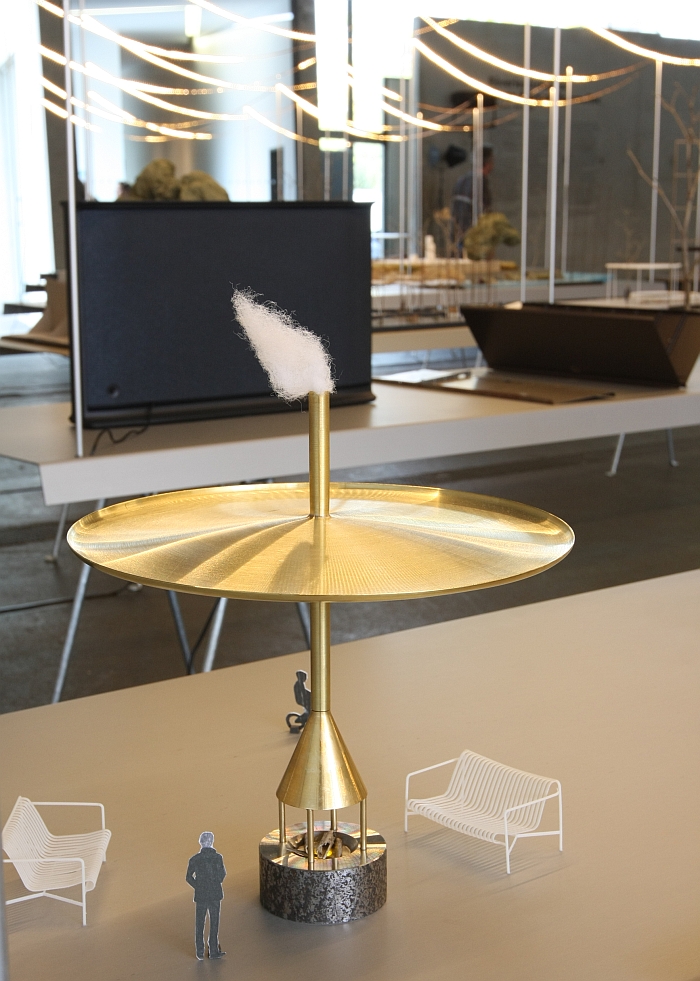
Cheminees (Fireplaces), as seen at Ronan & Erwan Bouroullec – Rêveries Urbaines, Vitra Design Museum
Rêveries Urbaine: Dreams as grammer
Although featuring 14 different proposals Rêveries Urbaines is technically only about a limited number of concepts: collective, water, height, partition, shelter. Concepts which repeat themselves in numerous forms, in combination with various possible materials and at a range of scales and which thus stand as empirical elements for the design of urban spaces rather than solutions.
If you will the Bouroullec’s have developed an elementary grammatical structure for urban design.
Some concepts are fairly straightforward. Water for example has long been a key element of urban spaces, be that the village pond, village well or commemorative fountain. In Rêveries Urbaines the water itself is in many ways less the focal point as the properties of water: its sounds, movement and its calming influence. Similarly the old central wood burning oven once found in neigh on all communities for baking bread in the days before widespread domestic oven ownership, finds its modern incarnation in Cheminées (Fireplaces) which provides for communal or individual appreciation of an open fire.
Other ideas can be considered a little more abstract. If, for example, we are increasingly giving up private space in the interests of community, is there not an argument to be made for offering privacy in public spaces? Is that not a fair trade off? Privacy is after all still important.
Yes, the police and associated regulatory bodies wont like the idea of individuals being able to completely vanish behind screens and partitions, but then none of the Bouroullec’s positions offer that; rather are proposals which much like the Algue space dividers disrupt the space, create an impression, a sense, of segregation and seclusion, one which is understood by all without ever actually being fully there. And which thus allow for privacy without anyone ever being able to own the space.
And that is perhaps the secret to the 14 positions, the secret to Reveries Urbaines, in their own way all positions contain the essentials of the Bouroullec design philosophy, are true to the Bouroullec’s positions.
Just as the Bouroullec’s understand, for example, an office situation as being about organising elements into an integrated and comprehensible whole which eases processes and which not only functions as a space but functions as a space in which individuals feel comfortable and which they respect.
So too their urban spaces.
In addition the proposals posses a scrupulous honesty.
Nothing feels forced, nothing feels artificial, and perhaps most importantly with Rêveries Urbaines there is no attempt to present the Bouroullec’s as great architectural theoreticians, that would be frankly absurd, what there is an attempt to explain how they would, could, transfer their design to the public space.
And in that attempt they succeed.
And what they say is worth listening to.
You don’t have to agree with it, don’t have to like it, you’re perfectly at liberty to interpret rêverie in the derogatory sense of wasting time with fanciful, impractical notions rather than getting on with something useful: but as a position in a necessary discourse Rêveries Urbaines has its validity.
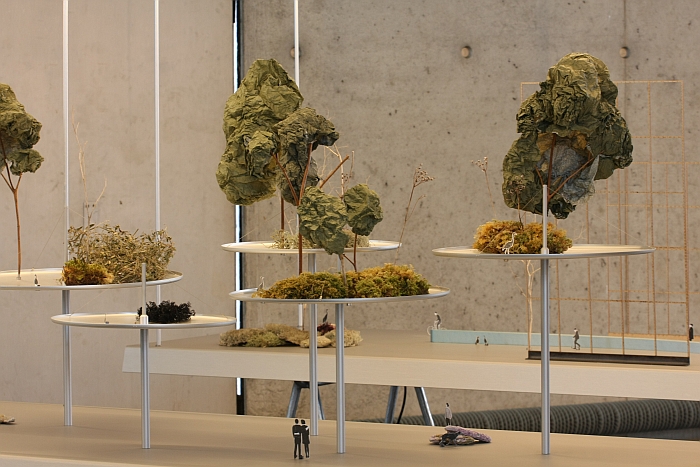
Foret suspenue (Hanging Forest), as seen at Ronan & Erwan Bouroullec – Rêveries Urbaines, Vitra Design Museum
Rêveries Urbaines. Dreams on show in and originating from Weil am Rhein
In addition to being on show on the Vitra Campus through conversation with the Bouroullecs one gets the very definite impression that Rêveries Urbaines also has its spiritual origins on the Vitra Campus. And of the nature of the relationship between the Bouroullec’s and Vitra Urvater Rolf Fehlbaum.
“When we started cooperating with Vitra, Rolf asked us to think about office environments”, explains Ronan Bouroullec, “at time we were still very young, the office was just Erwan and me, and we had never worked on projects for hundreds, or thousands, of people, so that was a real challenge and something we had to learn to understand. And now I really value that position of standing quite naive in front of a subject, and in a way this project was a lot like the early days with Vitra, there is a lot of naivety in the proposals”
“Working with Rolf we learned to value what it means to design for many people, to understand how people interact” adds Erwan Bouroullec, picking up the story, “an important part was what Rolf calls the “marketplace”, which means thinking about how one can combine a number of different activities in such a way that they achieve a higher result. And in addition he always advised us not to worry to much about how other people work, or even how large companies work, because at some point you are just going to start mimicking them. Rather he advised us to always reflect on what we personally feel and want to say and then hopefully the logic and the concept will be more universal. And so a lot of the conceptual background to Rêveries Urbaines comes from the many conversations we have had with Rolf.”
And the physical reality of Reveries Urbaines will also continue with Rolf: at the exhibition opening Rolf Fehlbaum indicated that before too long we can/should expect to find one or the other proposal on the Vitra Campus.
And not just there, because if our information is correct, and we really, genuinely, see no cause to doubt it, selected projects arising from the research undertaken for Rêveries Urbaines are in (advanced) planning for a number of cities.
In adapted forms. Scaled up or scaled down. Taking the grammatical structure to develop site specific, and site appropriate, solutions.
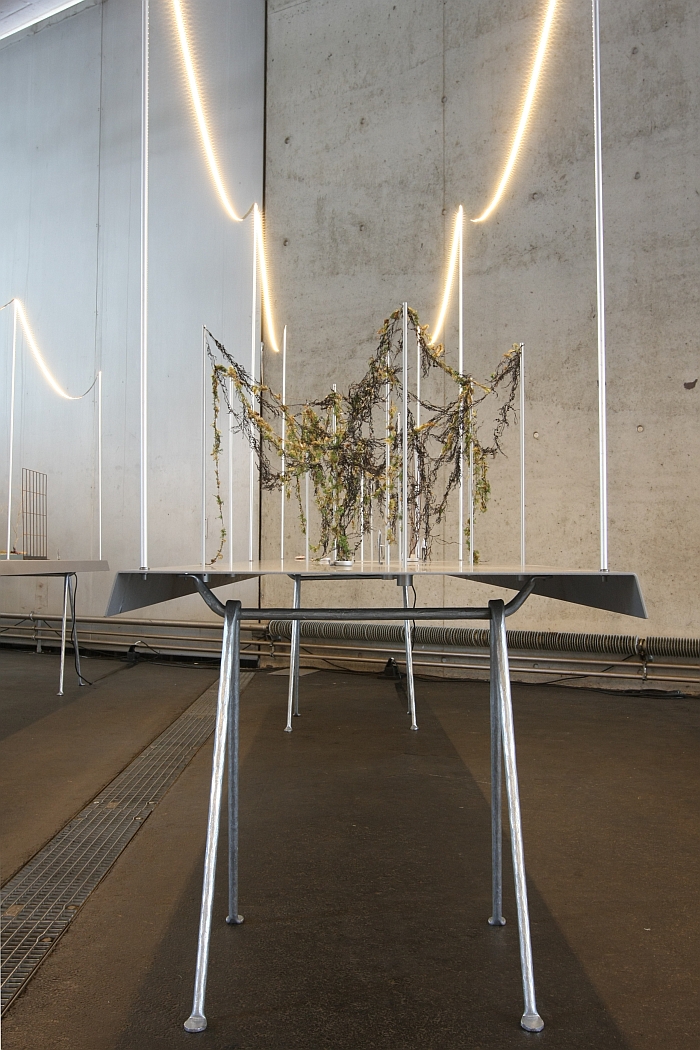
Lianes (Vines) and an Officina table trestle by Ronan and Erwan Bouroullec for Magis. The trestle building the “base” of the exhibition design
Rêveries Urbaines. Dreams as motivation to define your own dreams
As an exhibition Rêveries Urbaines is, and as with all interesting exhibitions of this type, not so much about the presented works but about generating a discourse, about motivating us all to think about the subject at hand and form a position.
In that all the proposals are naive brainstormings visualising scalable, adaptable, systems one has the freedom to consider them without a context, simply on the merits of the underlying concept rather than the aesthetic, material or functional values of a specific “object” in a specific location.
In terms of home and office furnishings such is established practice.
Topics such as sit-to-stand workspaces, rooms within rooms or stowable furniture are considered on their merits, untroubled by the presence of a specific object.
Why not also considerations of urban furnishings?
Because it is too abstract?
Possibly.
Because it is too large a topic, with no obvious starting point, far less middle or end?
Possibly.
Because the local authority will do whatever they want anyway, and that at the behest of some local lobbyist, company or financial software billionaire.
Invariably.
But that is exactly why we should all concern ourselves with questions of urban design and urban planning, for as we always note in such posts, such decisions are too important to be left to architects and local politicians alone.
Far too important.
Walking round Rêveries Urbaines we often found ourselves mentally populating the spaces under, beside and next to the proposals not with the suave urbanites, happy-go-lucky children and ducks employed in the exhibition design but by bored teenagers, addicts of various genres, the socially uncomfortable, and all those others who generally occupy the areas around such public installations.
Such situations generally arise because the wider public feel no ownership of the work. And thus neither empathy nor a sense of responsibility.
A situation for which the wider public themselves are partly to blame: because they have never concerned themselves with design questions outwith their own homes or work places.
Rêveries Urbaines are Ronan and Erwan Bouroullec’s urban dreams. But as a general discussion which argues in terms of basic elements rather than specifics, Rêveries Urbaines is also an accessible, intelligent and entertaining place to start forming your own.
Ronan & Erwan Bouroullec Rêveries Urbaines can be viewed in the Vitra Fire Station on the Vitra Campus, Charles-Eames-Straße, 79576 Weil am Rhein, Germany until Sunday January 22nd. Entry is free.
Full details can be found at www.design-museum.de
- Ronan & Erwan Bouroullec – Rêveries Urbaines, Vitra Design Museum
- Ronan & Erwan Bouroullec – Rêveries Urbaines, Vitra Design Museum
- Ronan & Erwan Bouroullec – Rêveries Urbaines, Vitra Design Museum
- Cheminees (Fireplaces), as seen at Ronan & Erwan Bouroullec – Rêveries Urbaines, Vitra Design Museum
- Nuages (Clouds), as seen at Ronan & Erwan Bouroullec – Rêveries Urbaines, Vitra Design Museum
- Tourniquets (Turnstiles), as seen at Ronan & Erwan Bouroullec – Rêveries Urbaines, Vitra Design Museum
- Foret suspenue (Hanging Forest), as seen at Ronan & Erwan Bouroullec – Rêveries Urbaines, Vitra Design Museum
- Fontaine longue (Long fountain), as seen at Ronan & Erwan Bouroullec – Rêveries Urbaines, Vitra Design Museum
- Kiosque (Kiosk) by Ronan & Erwan Bouroullec. A quick assemble, modular kiosk
- Pergola, as seen at Ronan & Erwan Bouroullec – Rêveries Urbaines, Vitra Design Museum
- Abris et rochers (Shelters and rocks, as seen at Ronan & Erwan Bouroullec – Rêveries Urbaines, Vitra Design Museum
- Cascade (Waterfall), as seen at Ronan & Erwan Bouroullec – Rêveries Urbaines, Vitra Design Museum
- Lianes (Vines) and an Officina table trestle by Ronan and Erwan Bouroullec for Magis. The trestle building the “base” of the exhibition design
- Ronan & Erwan Bouroullec – Rêveries Urbaines, Vitra Design Museum
- Good night, and sweet dreams….. Ronan & Erwan Bouroullec – Rêveries Urbaines, Vitra Design Museum
Tagged with: Rêveries Urbaines, Ronan and Erwan Bouroullec, Vitra Design Museum
